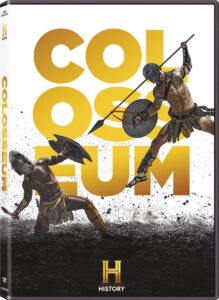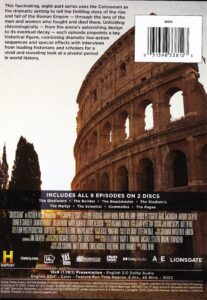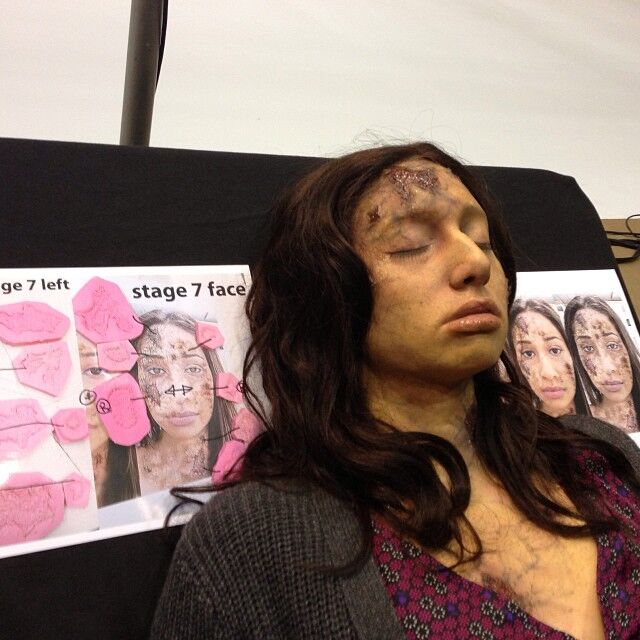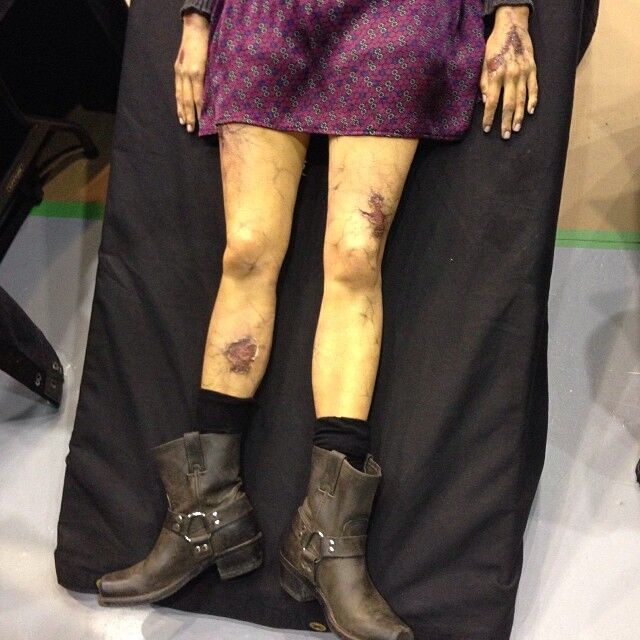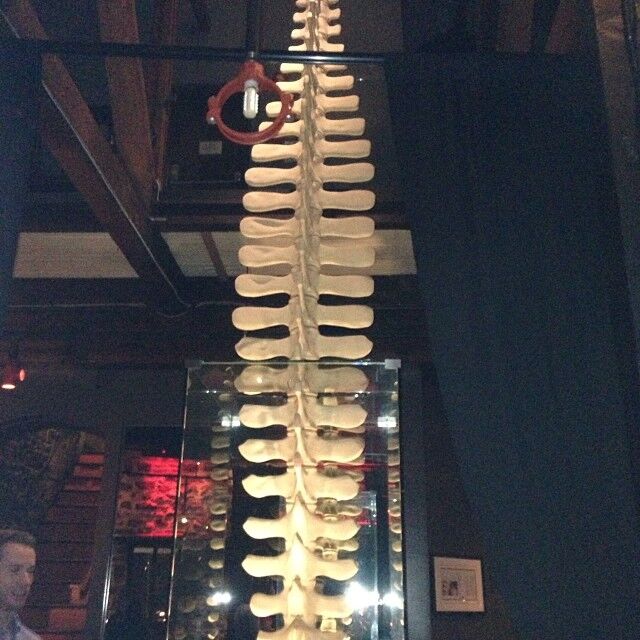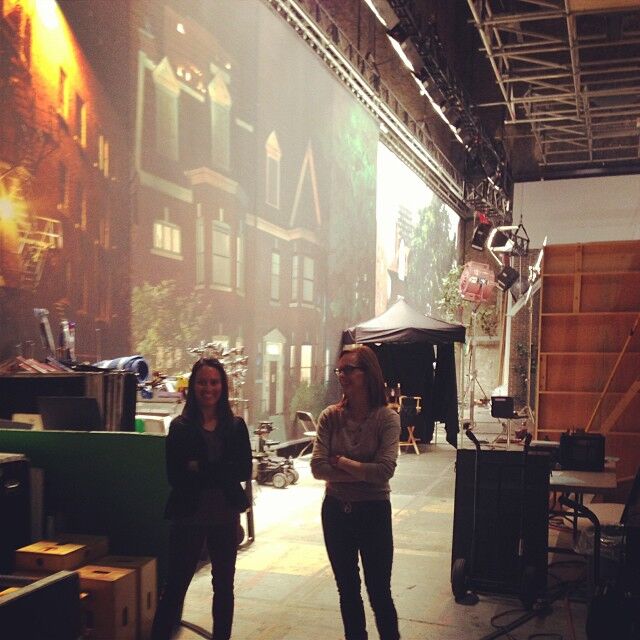The eight-part History Channel documentary Colosseum explores the pivotal role the Colosseum played in ancient Roman culture, and how it was the key to the rise and fall of the Roman Empire. The series delves into the history of the amphitheater from its construction and first gladiator games in 80 AD to its ultimate demise in 476 AD. The series is narrated by Campbell Scott, and uses a mix of interviews with authors and historians and dramatic recreations to bring the historic events to life.
The series is broken down into 8 episodes, each exploring a different part of the history. Here’s a rundown of the episodes:
- “The Gladiators” (46:53)
It’s 80 AD and the Colosseum has just been completed. The new emperor Titus is eager to showcase his power, hosting a 100 days of games, which will feature an epic battle to the death (or freedom) between two well known gladiators, Priscus (Timothy Blore) and Verus (James Oliver Wheatley). But first the episode jumps back to look at how these gladiators were captured and trained. - “The Builder” (45:13)
It’s 83 AD, just 3 years after the opening of the Colosseum, and the new emperor Domitian (Aron von Andrian) already has some elaborate modifications to make, adding a hypogeum beneath the structure so that things can suddenly appear in the arena as if by magic. In charge of making this a reality is master builder Haterius (Daniel De Bourg). But first the episode jumps back to look at Haterius’s involvement in building the Colosseum for the original Flavian dynasty emperor, Vespasian, and the rise of the tyrannical Domitian to the throne. - “The Beastmaster” (45:12)
It’s 83 AD, the opening day of the new games, which promises the most extravagant beast hunt the world has ever seen—Carpophorus (Vinny Moli), the greatest beast master in the empire, will be taking on 20 wild beasts one after the other single-handedly. But first the episode jumps back to look at how the Romans obtained and imported its animals and slaves, and trained the beast hunters like Carpophorus. - “The Gladiatrix” (45:03)
It’s now 107 AD and Emperor Trajan, who has been in power for 9 years, introduces a new kind of spectacle in the arena, female gladiators. While these fighters were usually Dacian prisoners of war, the featured gladiatrix in these games includes Mevia (Carlotta De Gregori), who was originally born a free citizen of Rome. But first the episode jumps back to 101 AD to follow Mevia’s plebeian upbringing, her training, and journey to the amphitheater, as well as satirical critic Juvenal’s mocking coverage of her. - “The Martyr” (44:49)
In 107 AD, Christianity is becoming a threat to Rome. In hopes of quelling this, emperor Trajan decides to include the execution of prominent Christian leader Ignatius of Antioch (Anthony Barclay) in his games, feeding the treasonous man to the lions. But first the episode jumps back 6 years to look at the rise of Christianity in Rome, and Bishop Ignatius’ long pilgrimage to Rome for his willingly-accepted martyrdom in the arena. - “The Scientist” (44:56)
In 162 AD, brilliant medical scientist Galen (Doug Rao) makes his way to Rome on a quest to become a renowned doctor to the societal elite and the emperor himself. However, a Barbarian invasion, a plague, and a new role for the gladiators changes the Roman Empire forever. But first the episode jumps back 5 years to look at Galen in his home town, in his first medical role as a doctor at a ludus for gladiators. The episode also explores the reign of Marcus Aurelius (Simon Thorp) and his adopted brother Lucius Verus. - “The Emperor” (45:08)
In 192 AD, Emperor Lucius Aurelius Commodus (Teddy Robson) surprises the audience at the Colosseum as he enters the arena as a gladiator in the headline bout, much to the annoyance of the Senate. But first the episode jumps back to 177 AD to look at an 18-year-old Commodus taking over as emperor and how his different approach to ruling ultimately leads to the decline of the Roman Empire, and a drives a wedge between him and the Senate. - “The Pagan” (44:54)
In 401 AD, Rome is a physically divided empire, led by two emperors. Rome is no longer the center of the empire, and Christianity is also on the rise. The leader of the Senate, Symmachus (Ian Beattie), has a plan to revive traditional Roman values by throwing the most lavish games the Colosseum has ever seen. But first the episode jumps back 6 years to follow Symmachus’ journey to this moment, as he sees many of his friends and those in power converting to Christianity, and mobs of radical Christians ripping down pagan statues and monuments. Much of the infrastructure for the gladiatorial games is gone, and so Symmachus faces an uphill and expensive battle trying to procure the fighters, animals and beast hunters, and restoring the Colosseum, for his games.
I found Colosseum to be an interesting look into the history of the Roman Empire, focused around the role of one of its most famous and important buildings. While there’s not a lot of dialogue in a lot of the re-enactment footage, they are really well done, and serve as an entertaining backdrop to the narration and statements coming from those being interviewed, and help to make the historic events they are talking about come alive. They do a nice job of showing just how brutal and bloody these gladiatorial games could be! The series provides a nice overview of this period, but it’s a lot to try to cover in such a short amount of time, so it is far from comprehensive. That said, my one complaint is how the series suddenly jumps 200 years between the last 2 episodes. It seems like there could have been another episode or two to cover that period of decline inbetween.
As I binged my way through the series, I always found myself interested and engaged. Campbell Scott provides a soothing narration, and the collection of authors and historians they’ve assembled do a nice job of conveying the historical facts. Those interviewed include Professors Robert Cargil (University of Iowa), Caitlin Gillespie (Brandeis University), T. Corey Brennan (Rutgers University), Yohuru Williams, (University of St. Thomas), Alison Futrell (University of Arizona), Dr Jerry Toner (University of Cambridge), Clifford Ando (University of Chicago), Nicola Denzel Lewis (Claremont Graduate University) & Susan Mattern (University of Georgia), Professor Emerita Shelley P.Haley (Hamilton College), Professor Emeritus Gregson Davis (Duke University), Historians and authors Dr Patrick Wyman, Simon Sebag Mintefiore, Professor Bettany Hughes & Dr Bryan Litfin, authors Dr Barry Strauss (“Ten Caesars”) & Tom Mueller, Rome Historian Alexander Mariotti, Archaeologist Jeanette Plummer Sires, and Dr Darius Arya of (The American Institute for a Roman Culture.
Lionsgate Home Entertainment has only released this series on physical media on DVD, despite it originally airing in HD on History (though it can be purchased digitally in HD). The picture quality is still quite good and more than sufficient—thogh the reenactments aren’t quite as sharp and detailed as your typical HD/Blu-ray release. The audio track is a bit of a mystery. While the series originally aired in Dolby 5.1 on History, it is presented here in Dolby 2.0. That said, my audio receiver converted it to 5.1, and it sounded fantastic, with clear dialogue and a full, rich sound (the roar of the crowd filling my room). The two DVD discs comes packed on either side of a standard-sized DVD keepcase. The release does not include any bonus material, a digital copy, or a slipcover.
What’s Included:
- All eight episodes of the series:
Disc 1: “The Gladiators”, “The Builder”, “The Beastmaster”, “The Gladiatrix”
Disc 2: “The Martyr”, “The Scientist”, “The Emperor”, “The Pagan” - 480i / Anamorphic Widescreen 1.78:1
- Audio: English Dolby Digital 2.0
- Subtitles: English SDH
Extras:
-
There is no bonus material included
Final Thoughts:
Colosseum is another interesting and entertaining History documentary series that utilizes a blend of narration, interviews and dramatic recreations to bring the history to life. It provides a nice overview of a specific period of the Roman Empire and the history of the Colosseum. While the series originally aired in HD, it is only offered on physical media in SD. The disc features a solid presentation but lacks any bonus material. That said, with its interesting storytelling and interviews, and great reenactments, this is a very entertaining show that makes an easy recommendation based on the series alone.
Colosseum [DVD]
30% Off $19.98 $13.95 (as of April 27, 2024 10:40 GMT -04:00 – More infoProduct prices and availability are accurate as of the date/time indicated and are subject to change. Any price and availability information displayed on [relevant Amazon Site(s), as applicable] at the time of purchase will apply to the purchase of this product.)
Colosseum Season 1
$18.99 (as of April 27, 2024 10:40 GMT -04:00 – More infoProduct prices and availability are accurate as of the date/time indicated and are subject to change. Any price and availability information displayed on [relevant Amazon Site(s), as applicable] at the time of purchase will apply to the purchase of this product.)

